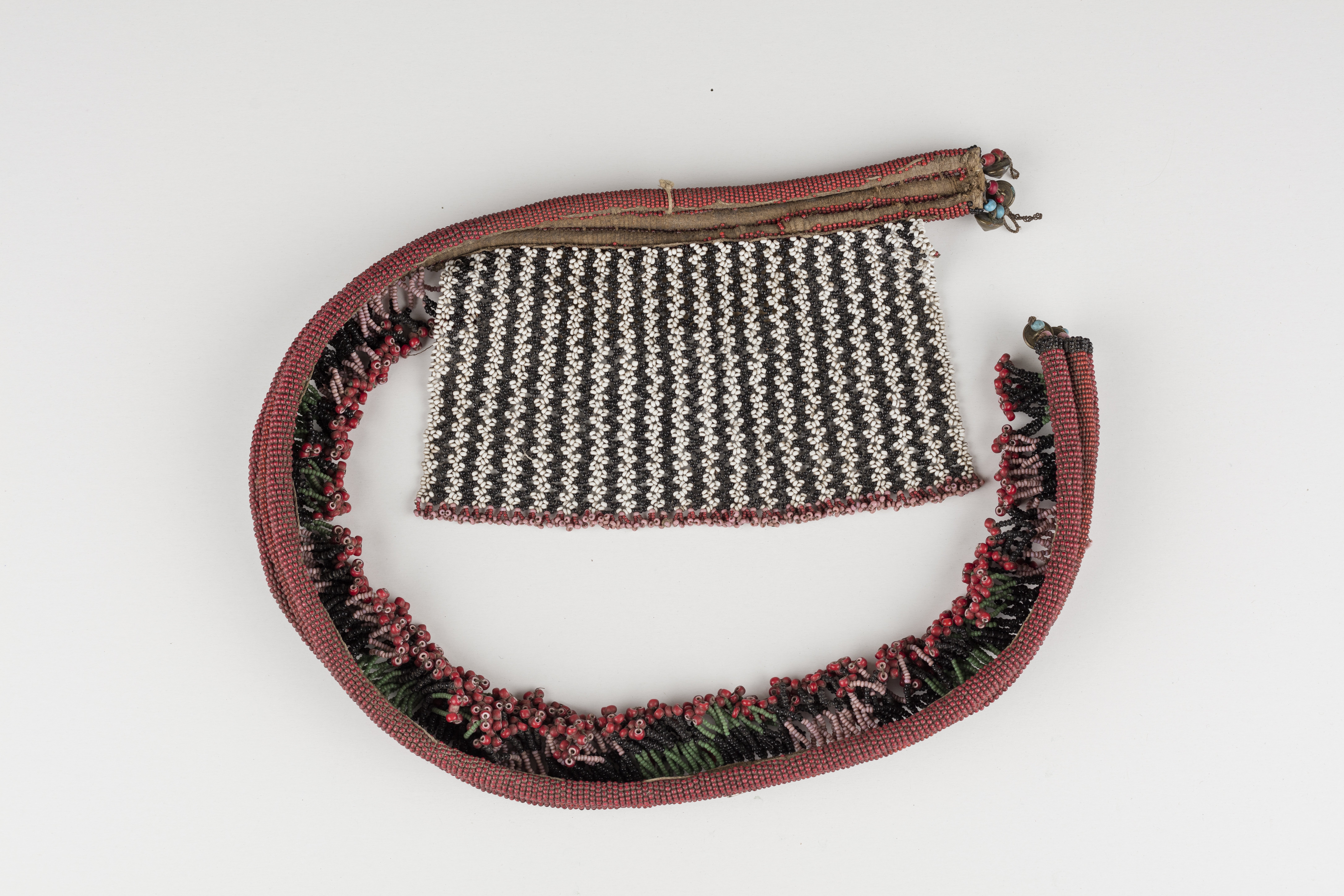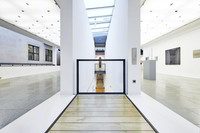A loincloth whose core is built by three parallel, tied together strands, which consist of a compressed fabric that is wrapped with threads. Threads on which red and black glass pearls are strung bundle the fabric. The girdle is provided with hanging glass pearl strings in black and green or black and pink that end each with a red and a bit larger pearl. The covering part is attached to the girdle and consists of a rectangular zigzag braiding from black, white, red and pink pearls. On both sides of the belt are three brass buttons on short pearl strings. Together with three loops on one end, the buttons serve as fastener.
Among the Zulu loincloths that are called "umutsha" are in general worn by women and men. However, the forms of the loincloths vary depending on age and sex. According to the inventory, a girl wore this object. Such belts with a small, rectangular part that covers the pubes ("isigeke") is a typical form. The style of the loincloth and the patterns and colours of the bead-work make use of a complex symbolic system and express i. a. social relations or messages.
In 1923, Max Hößle committed the object, as part of a collection, to the Gewerbemuseum (Museum of Applied Arts) Ulm. Ulrich Hößle compiled the collection around 1880 in South Africa in the region of Pietermaritzburg in the present province of KwaZulu-Natal. The territory then belonged to the British Colony of Natal.
de

